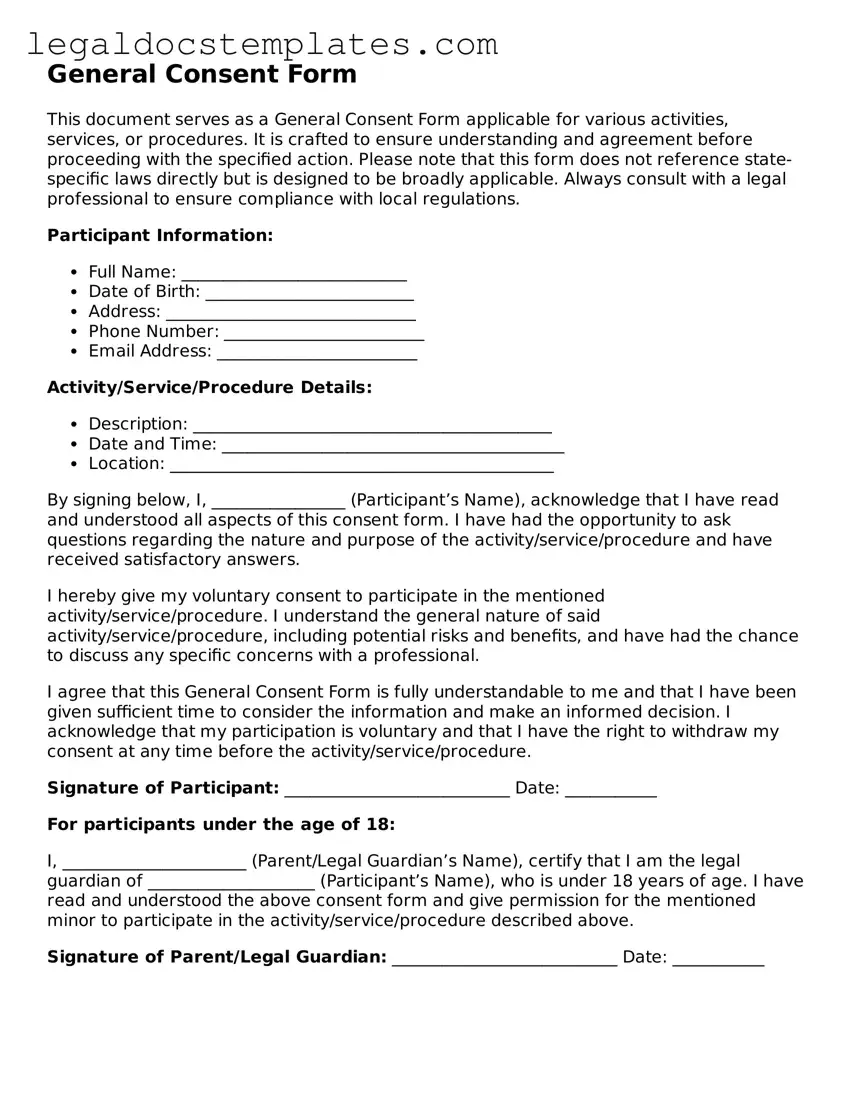A Release Form operates similarly to a Consent Form, as both are used to grant permission and protect against legal claims. While a Consent Form typically pertains to agreeing to participate in an activity or procedure, a Release Form is broader, covering the relinquishment of any legal claims the signer might have against the party providing the form. For example, a Release Form may be used when someone is giving up rights to sue for potential injuries at an event.
Another document that echoes the Consent Form is the Medical Release Form. This specific type of release empowers healthcare providers to share the patient's medical information with third parties, such as family members or other doctors. Similar to Consent Forms, which may allow medical procedures to be performed, Medical Release Forms involve granting permissions, but specifically for the sharing of confidential health information.
The Power of Attorney (POA) shares similarities with Consent Forms, as both involve granting someone else the authority to make decisions on one’s behalf. However, a POA is more comprehensive, usually encompassing legal, financial, or health-related decisions, whereas Consent Forms might be used for a singular event or decision, such as participating in a research study.
Non-Disclosure Agreements (NDAs) are akin to Consent Forms in that they bind signatories to certain terms, but NDAs specifically focus on the confidentiality of shared information. While Consent Forms may permit actions or procedures to take place, NDAs restrict the sharing of proprietary or sensitive information beyond the agreement's confines.
Liability Waivers resemble Consent Forms by requiring a party to acknowledge and accept the risks involved in an activity, thereby providing a measure of legal protection to the provided party. These documents often are used in contexts where there's potential physical risk, like sporting events or adventurous activities, ensuring participants do not hold the organizers responsible for injuries.
Photo Release Forms share a purpose with Consent Forms by formally obtaining permission, but these documents specifically deal with the use of one's image. A Photo Release Form allows an organization or individual to legally use, publish, or reproduce the photograph of the person signing the form, often found in media releases or event photography agreements.
Parental Consent Forms are a subset of Consent Forms specifically designed for minors, where a parent or guardian grants permission for their child to participate in an activity, such as a field trip or research study. These forms are crucial for activities requiring legal consent from a guardian before a minor can be involved.
Data Privacy Consent Forms, important in the digital age, are designed to obtain an individual's consent to collect, use, or share personal information, adhering to data protection laws. These forms ensure transparency between parties, much like how Consent Forms communicate what the signer is agreeing to, with a particular focus on personal data.
An End User License Agreement (EULA) also relates to Consent Forms by requiring the end user to agree to terms before using software or services. Though primarily focused on the conditions of use and distribution, both EULAs and Consent Forms establish a formal agreement between parties regarding specific terms and conditions.
Lastly, Employment Agreement Forms relate to Consent Forms by setting forth terms that both the employer and employee agree to, including job responsibilities, compensation, and confidentiality requirements. While Employment Agreements cover the full scope of employment terms, Consent Forms might be used within an employment context for specific purposes, like authorizing a background check.
